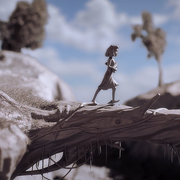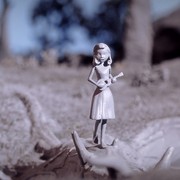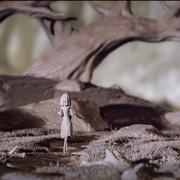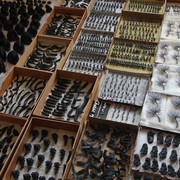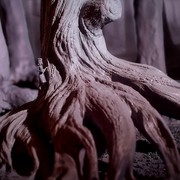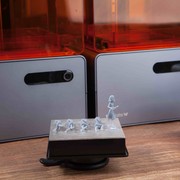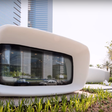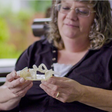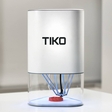
Gilles-Alexandre Deschaud: a digital artist who was the first to create a short animated film made entirely of 3D printed figurines.
A talented Frenchman, a 3D printer Form 1+ SLA, 80 liters of resin, two years of work and more than 2,500 3D printed pieces. The result is the first animated 2 minutes and 54 seconds long film called "Chase Me," which is made entirely of 3D printed figurines. First screened in June at the prestigious French festival, Annecy International Animation, the film enjoyed its five minutes of fame even at the neighboring Cannes Film Festival.
The story begins with a girl who takes a stroll through a magical forest, when suddenly her shadow transforms into a monster, who chases her through the woods. "Chase Me is a story about self-awareness, self-acceptance and the acceptance of your fears that can be changed into something beautiful," says artist Deschaud, who developed the idea about this new type of film many years ago. "The moment I saw a 3D printer Form 1+ SLA on Kickstarter, I wanted to use the 3D printing technology in the world of art. I studied the printer in detail and soon realized that it was perfect for tiny, as well as more complex, productions."
Gilles-Alexandre spent 5-10 hours on the production of set, each of it has 20-30 parts and he has 12 different sets.
"Size is a crucial factor in time spent on printing one model. A production of an animated character took, let's say, from an hour and a half to eight hours and a half," says the young producer who, prior to printing, designed all of the characters with a special computer software. To expedite the printing process, he worked on many printers simultaneously.
The characters come in different sizes. While the lead character, a girl, was 3 cm tall to begin with, another 7 cm figurine was used for a close-up photography, with her shadow measuring as much as 12 cm.
A bigger tree consisted of 22 parts. "It took a while before we figured out the workings of the printer, which resulted in wasting quite a bit of material, but in the last six months our success rate was one-hundred percent, and everything was smooth sailing," says the proud Deschaud, who saw the biggest challenge in the tiniest of the 3D model prints. "Tiny models were the most demanding, because I couldn't afford to print them too small and lose a great deal of detail, and I couldn't afford to print them too big and put the entire project at risk. These pieces were also the most difficult to shoot, because in the process of shooting, even the smallest shift in position could affect the entire animation." Every second of the film consists of 15 frames. The animation came to life in collaboration with Formlabs, where 80 liters of resin were used for the creation of 2,500 models.
In spite of demanding, time-consuming and painstaking work, Deschaud remains thrilled about 3D printers, and surely we will see more of him. "3D printers are the future. In film industry as well."
